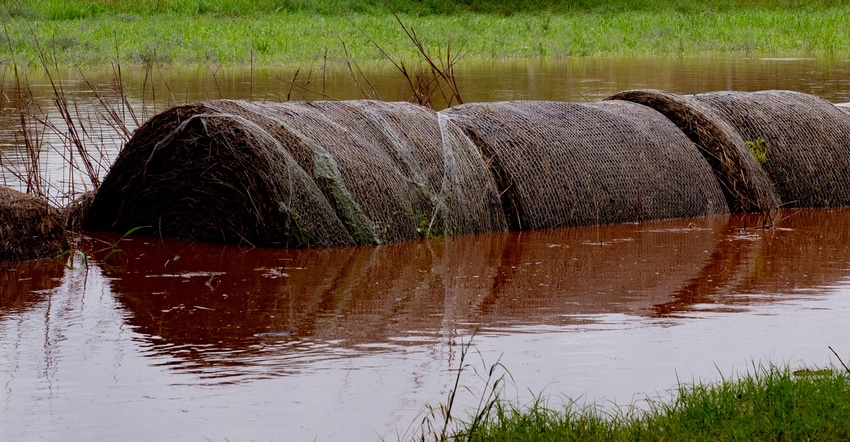June 12, 2019

Heavy rains and enormous concern plagued Oklahoma in May as thunderstorms and tornados made their way through the Southern Great Plains. Though the storms have passed, the state is still burdened by damages and consequential flooding.
Kevin Wagner, director of the Oklahoma Water Resources Center at Oklahoma State University, said recent heavy rainfall, on top of already saturated soils, led to the widespread flooding across Oklahoma.
See, Cattle producers should examine animals for signs of foot rot
With the severity of these floods all across the state, infrastructure everywhere in Oklahoma is struggling to keep up,” Wagner said.
Jason Warren, OSU Cooperative Extension soil and water conservation specialist, said terraces, dams, reservoirs and other forms of flood mitigation are being dealt more water than they were created to deter.
“Many people have lost their homes to the Cimarron River in Crescent, Okla., due to the erosive nature of the land surrounding the river. Rapid runoff into the river scours and sloughs off soil from the riverbanks, leading to devastating events such as this,” Warren said. “There will be more problems downstream when these sediments settle in our reservoirs and reduce water-holding capacity and degrade water quality.”
See, Wildlife affected by flooding in Oklahoma
Though the flooding is beginning to recede, Oklahoma still has high water to face. Those residents affected are picking up the pieces left after the disastrous flooding. Further, the state’s reservoirs demand attention with the large amount of sediment build-up and necessary infrastructure updates. It is sure to be a long recovery for the state.
To help with recovery efforts, HB2143 was passed last month to lessen the effects of flooding events in the future. It created the McClellan-Kerr Arkansas River Navigation System Infrastructure Revolving Fund to maintain, repair or update the infrastructure of this important waterway. This may become effective as soon as July 1, 2019.
For more information, contact your local OSU Cooperative Extension office or the Water Resources Center 405-744-5615 or via email at [email protected].
Source: is OSU, which is solely responsible for the information provided and is wholly owned by the source. Informa Business Media and all its subsidiaries are not responsible for any of the content contained in this information asset.
You May Also Like




